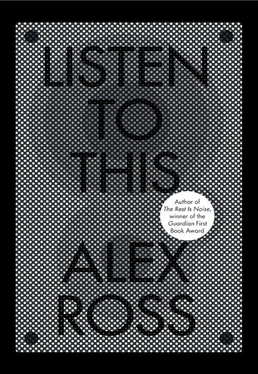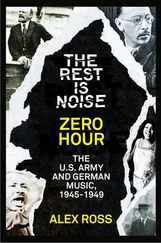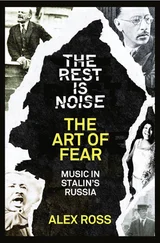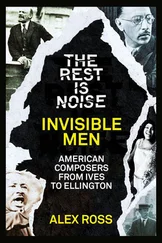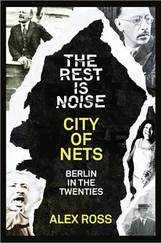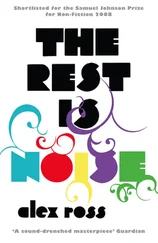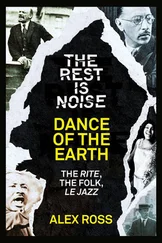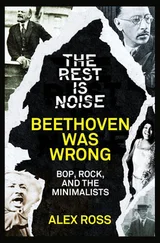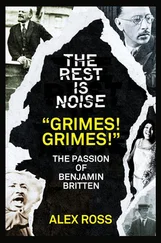In at least one area, performance style has undergone a sea change. Early music long had the reputation of being the most pedantically “correct” subculture in classical music, but in recent years the more dynamic Renaissance and Baroque ensembles—Jordi Savall’s Hespèrion XXI, William Christie’s Les Arts Florissants, Rinaldo Alessandrini’s Concerto Italiano, and various groups led by the violinist Andrew Manze and the keyboard player Richard Egarr, to name a few—have begun exercising all the freedoms that have gone missing in much modern performance. They execute some notes cleanly and others roughly, they weave around the beat instead of staying on top of it, they slide from note to note when they are so moved. If the score calls for or expects a cadenza or improvisation, they execute one of their own invention. As a result, the music feels liberated, and audiences respond in kind, with yelps of joy. Christie has said that his group is modeled on Duke Ellington’s band of 1929: players amble in and out of the spotlight, adding daubs of color before rejoining the background. If, in coming years, the freewheeling spirit of the early-music scene enters into performances of the nineteenth-century repertory, classical music may finally kick away its cold marble façade.
For those of us who grew up during the extended heyday of recordings, the digital landscape of the early twenty-first century presents a confusing picture. The record labels, which long held sway with an iron or velvet fist, are reeling, their products downloaded everywhere on file-sharing networks, their attempts to police piracy verging on the fascistic. The concept of a discrete album of songs or works is probably in terminal decline. In pop, the main money is now to be made in the packaging of tours and the selling of merchandise. Prince gave away millions of copies of his 2007 album Planet Earth as a way of luring audiences to his shows. In the same year, Radiohead offered its latest album, In Rainbows, through its own website, instructing fans to pay whatever they wished. The technology of easy access has become so sophisticated that it is undermining the corporate structure which brought it into being—a development that might have delighted Walter Benjamin. The brainy moguls of decades past are to be mourned, but in the long run it may not be a bad thing that young people have stopped hoarding music in the form of packaged objects. Music is no longer a prize in a collection; it is returning to its natural evanescent state.
Classical music, or a portion thereof, is thriving online in unexpected ways. Perhaps no one should be surprised; if, as people say, the Internet is a paradise for geeks, it would logically work to the benefit of one of the most opulently geeky art forms in history. The more resourceful organizations are offering live and archived audio (you can hear almost every event in London’s summertime Proms series through the website of the BBC), setting up online listening guides (the San Francisco Symphony has hightech maps of the Eroica and The Rite of Spring), assembling fastidious archives (the Metropolitan Opera site can tell you in a matter of seconds when any singer made his or her debut), and peddling studio-master-quality audio downloads (the Tallis Scholars sell their impeccable recordings of Renaissance masses). Web-savvy young composers, meanwhile, no longer depend on publishers to reach their public, distributing their wares through blogs, MySpace, YouTube, Facebook, Twitter, and whatever social network becomes fashionable after this book goes to press.
The diffusion of classical music online is a boon for fans, and it may also ease the fears of the infamous “culturally aware non-attenders.” Novice concertgoers and operagoers can shop for tickets, read synopses of unfamiliar plots, listen to snippets of unfamiliar music, read performers’ blogs, and otherwise get their bearings out on the tundra of the classical experience. First-time record-buyers can read reviews, compare audio samples, and decide on, for example, a Beethoven recording by Furtwängler, all without risking the humiliation of mispronouncing the conductor’s name under the gaze of a grumpy record clerk. In the days before the collapse of the record business, when megastores like Tower Records were thriving, sepulchral soundproofed doors divided the classical department from the rest of humanity. For better or worse, classical music no longer inhabits a separate room; it is in the mix.
At the same time, classical music stands partly outside the technological realm, because most of its repertory is designed to resonate naturally within a room. By contrast, almost all pop music is written for microphones and speakers. In a totally mediated society, where some form of electronic sound saturates nearly every minute of our waking lives, the act of sitting down in a concert hall, joining the expectant silence in the moments before the music begins, and surrendering to the elemental properties of sound can have an almost spiritual dimension. Classical supremacists of prior years might have described it as a rite of elevation, but for me it is something more primal and enigmatic. Forms coalesce and then vanish, like Rimsky-Korsakov’s phantom city of Kitezh.
In 1926, twenty years after Sousa foretold doom, the critic Hans Heinz Stuckenschmidt reflected on the mechanization of music and came to this eminently sane conclusion: “The machine is neither a god nor a devil.” Mark Katz uses that quotation as an epigraph to Capturing Sound, and it nicely sums up the whole shebang. Neither the utopian nor the apocalyptic vision of the musical future has come to pass. People have plenty of pirated music in their cupboards, but they are still turning out for live performances, paying hundreds or even thousands of dollars to catch a glimpse of their idols. Music education is in tatters, but the impulse to make music with the voice, with an instrument, or on a computer remains. The critic David Hajdu, in an essay on the phenomenon of home remixing (creating new versions of songs on home computers), notes a curious throwback. “Members of the musical public are again assuming participatory roles, interpreting compositions at home, much as late Victorians played sheet music in parlor musicales,” he writes. In other words, we are almost back to where we started.
When I sift through my musical memory, I find that real and virtual events are inextricably jumbled. The strongest echoes are of live performances that shook me to the core: Mahler’s Eighth Symphony at Carnegie Hall, under the direction of the incomparable choral conductor Robert Shaw, with more than four hundred singers roaring forth in the first- and second-tier boxes; the post-punk bands Fugazi and the Ex in a sweat-drenched church basement in Washington, D.C., firing up a mass of youthful bodies; Gidon Kremer and five other musicians in an Austrian village church at midnight, presenting an extraordinarily eerie chamber arrangement of Shostakovich’s Fifteenth Symphony. Then again, certain recordings carry an acute emotional charge: I think of the Bernstein Eroica that I pretended to conduct as a child, the LPs of Mahler’s Sixth that I blasted in high school late at night, the Pere Ubu CD that forced me to abandon my cavalier dismissal of rock music. But I can’t replicate the psychic impact of those first encounters. They were unrepeatable events on a private stage. As the composer and theorist Benjamin Boretz has written, “In music, as in everything, the disappearing moment of experience is the firmest reality.”
Nothing in my listening life can compare to the experience of Hans Fantel, an author and critic who for many years covered audio matters for The New York Times. In 1989 he wrote about what it was like for him to listen to a CD reissue of a classic disc: a live recording, made on January 16, 1938, of the Vienna Philharmonic playing Mahler’s Ninth Symphony, under the direction of Bruno Walter. Fantel spent his childhood in Vienna, and he attended that performance with his father.
Читать дальше
